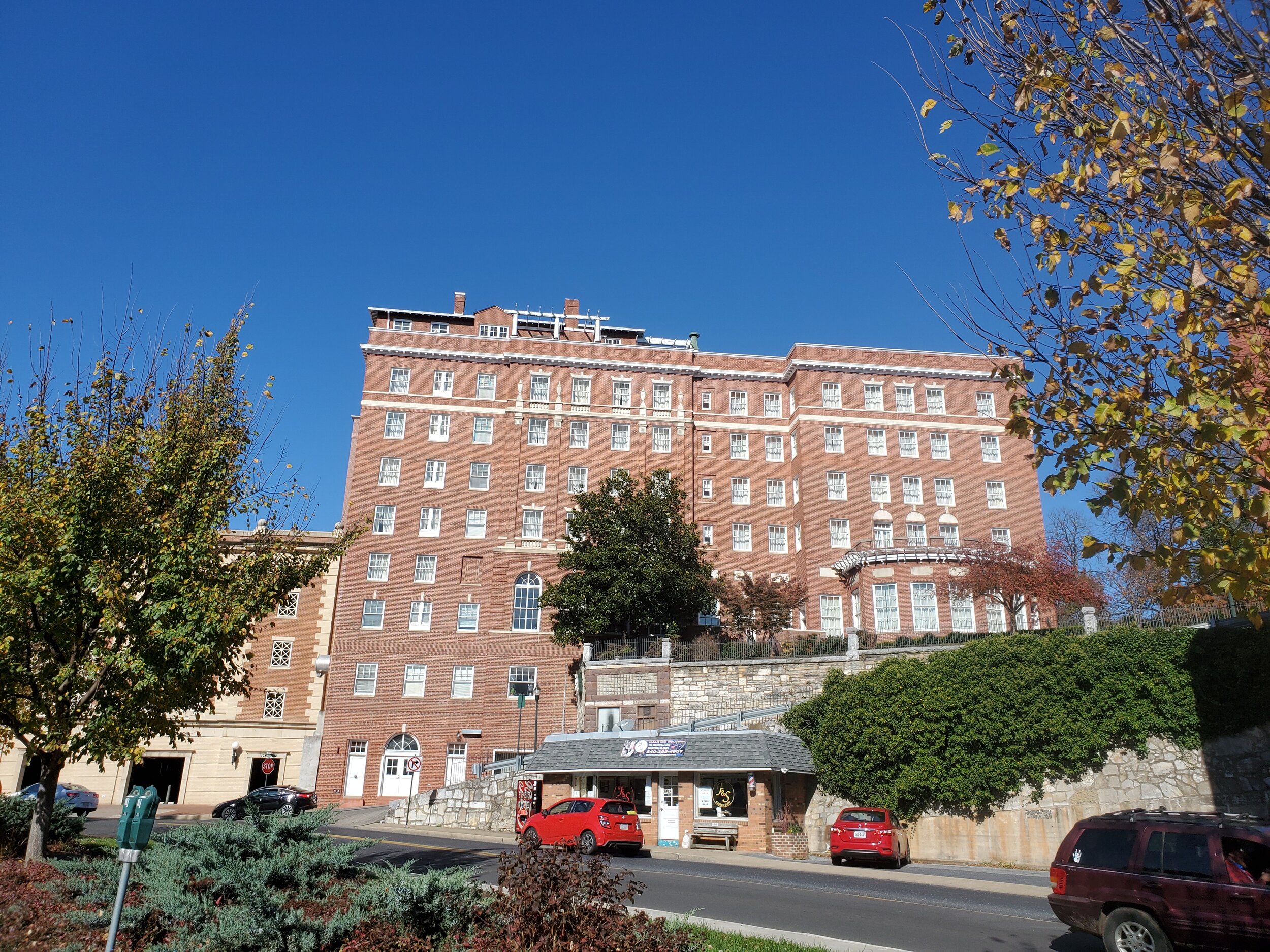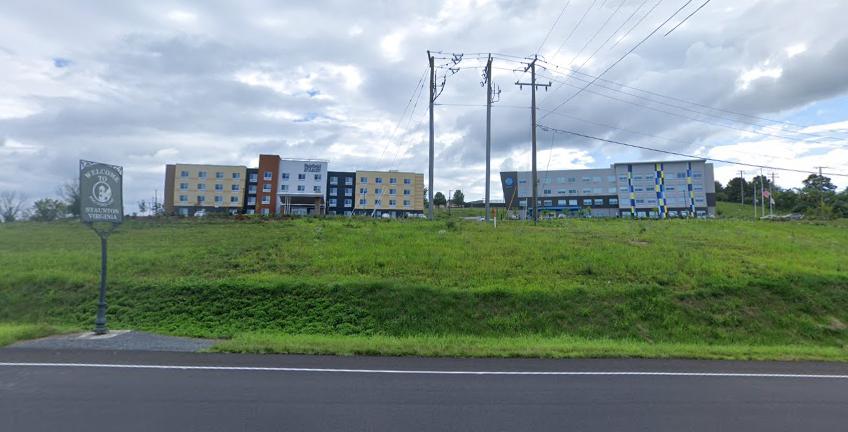"Urbanism" Isn't Synonymous with "Big City"
Staunton, Virginia, exudes a sense of grandeur. Its stately rows of sturdy old houses, thriving downtown, and faded brick warehouses nestled into jagged terrain embody a kind of temperamental conservatism. There are few things in the American built landscape more permanent yet adaptable than a 19th-century Main Street.
Staunton is the birthplace of Woodrow Wilson and the home of his presidential library, which gives the town an obvious tourism hook. It’s also one of the larger settlements in the Shenandoah Valley. While many small rural towns have stagnated or lost population, Staunton’s population more than doubled throughout the 20th century, and now sits at nearly 25,000, putting it somewhere between a town and a small city. It’s an imperfect but successful place, with an almost archetypical thriving downtown, anchored by an assortment of local restaurants and boutiques, and an equally archetypical ring of car-oriented commercial development where a lot of the “real,” everyday shopping takes place.
My wife and I love daytripping or taking a long weekend down this way. I’ve photographed and explored much of Staunton. As a tourist and an urbanist, this is my sense of it.
Staunton’s downtown is incredibly urban, although, as noted, it isn’t quite sufficient for everyday purchases. Very few towns and small cities have found a way to reinvigorate classic downtowns with everyday commercial amenities for people living there. Many residents, under the impression that basic everyday shopping more or less equates with big-box stores (or e-commerce), probably prefer their downtowns to remain more like open-air museums or tourist attractions. It’s a shame, because nothing really differentiates Staunton’s urban fabric from a fully functioning urban neighborhood in a larger city. Except that it isn’t quite used that way.
Places like this share a story about America that is too rarely told. I’ve seen over and over again (including in towns quite a bit smaller than Staunton in the same region) settlements located deep in the countryside which nonetheless have an urban and compact form, as well as beautiful public and civic buildings. This was possible because rail lines ran through many of these towns, and they were nodes in erstwhile regional economies. But it isn’t just about money. It’s also a statement of values to build a classical courthouse and public courtyard in a town of a few thousand people. Even commercial structures like banks and hotels were built with beauty. Staunton’s Hotel 24 South—formerly known as the Stonewall Jackson Hotel—was built in 1924, when Staunton’s population was just over 10,000. The hotel is doing well, and Staunton’s tourism fortunes are also visible in new hotels out by the interstate exits. Here’s how the sizes of the new and old hotels, and their architectural styles, compare:
One sense in which the downtown does work for locals as well as tourists is the food scene.
Incidentally, I thought through this while sitting in the Hometown Buffet and Grill, along one of the highway approaches into town. (Something about buffets gets me thinking.) I started by thinking about how this is the sort of food that most Americans, most of the time, still eat. I like the vibrant diversity of Fairfax County, Virginia, where I live; I also appreciate the old-timey diners and family restaurants all over the more rural and remote parts of my region. (Though diversity still pops up out there—deep in rural Virginia, I found a general store whose three Yelp reviews all rave about the samosas.) If you look many of these places up, you’ll often find a dearth of reviews, sometimes so few as to make you question if the place is still in business. But this doesn’t mean they lack customers. It only means their customer base doesn’t significantly overlap with Yelp users.
Along with independent, locally owned roadside places like the Hometown Buffet and Grill or Kathy’s (a pancake house where my wife and I always have breakfast), Staunton’s downtown is home to a thriving, somewhat higher-end restaurant scene. In fact, it’s becoming something of a Virginia foodie destination. The best restaurants here are rarified but rooted, nodding heavily to traditional Southern cooking and local ingredients. To some, this can feel a tad elitist, and it can also feel like a one-size-fits-all tourism-centric approach, unmoored from a town’s identity or actual economic function.
But this isn’t really the case. In fact, I think the opposite is true. Staunton’s restaurant scene is a modern throwback to the old small-town economy. Think about it: local, independent restaurants sourcing ingredients from local or regional farms, catering to locals as well as tourists, and supporting an ecosystem of small, local businesses downtown. It’s a partial restoration of the dense regional networks of commerce in which the American town was once central. The energy and the demand for these kinds of developments is there in many places. It is important that the regulatory and land-use regimes work with, and not against, this trend.
It would be easy to compare Staunton’s stately downtown with its aging sprawl, and come away with an aesthetic or cultural critique of the latter. But as readers of Strong Towns will know well, this is exactly the wrong takeaway. It is largely a matter of opinion whether large-lot, single-story, low-density, car-oriented development is ugly. But the fact is that this land-use pattern simply isn’t as productive or adaptable as the land-use pattern that characterizes towns, cities, downtowns, and urban neighborhoods. Even in good times, it doesn’t produce a strong return on investment. Forget about bad times.
The Staunton Mall (which actually falls outside city limits, and is under county jurisdiction) is one such example. The large shopping center, damaged by years of turnover in its anchor stores, sat mostly empty when I photographed it in November of 2020. Since then, however, the remaining tenants have been evicted, and the land has been rezoned for a mixed-use development. Still a very large lot and developer-driven project, but an improvement.
A less heartening example, sitting just outside downtown and within the city limits, is a massive big-box development vacated only a few years after it was built, originally housing a Walmart, Lowes, and warehouse-style supermarket. In other words, three very large stores, plus their parking lots and infrastructure connections, took up a prime real estate parcel—for almost no reason. Walmart and Lowes built nearby locations and vacated the old ones, and the supermarket went out of business. The three stores are now used as warehouse space by an auto parts company. Instead of green space or apartments, it’s home to a use that is both visually and commercially of little use to Staunton’s residents or tourists.
Small-town and suburban communities have attempted, with varying degrees of success, to reuse abandoned big-box stores. Artist Julia Christensen documented successful big-box conversions for her project, and later book, Big Box Reuse. Many have become churches, school extensions, or indoor flea markets. Occasionally, they’re subdivided into smaller storefronts, as my old K-Mart was. One former Kroger in a Virginia Beach strip mall even became a Kroger employee training center.
But some creative adaptations aside, an abandoned concrete box store has little of the usefulness, and none of the grandeur, of the traditional buildings in town just a stone’s throw away, many of which have stood for well over 100 years and have been home to a variety of different owners and uses. Smaller buildings are more flexible than larger ones (which also partly explains the continued use of many small roadside structures, such as former fast food restaurants). But big-box stores have few obvious alternative uses, and virtually none that are useful to small business owners.
Some of Staunton’s car-oriented penumbra, in my opinion, is old enough to produce nostalgia of a sort—the Texas Steakhouse and Saloon that hasn’t had a renovation since it was built in the ’80s, or Kathy’s, the sort of classic family restaurant that isn’t really built anymore. Most of all, there’s Wright’s Dairy-Rite, a midcentury neon-bedecked drive-in ice cream parlor, which has survived long enough to become a cultural treasure and iconic landmark. (The New Criterion even ran an article about it.) Whether or not these places are ideal, they’re old enough to have developed a sort of culture and place-ness of their own. Perhaps the lovability of artifacts like this has to do with the fact that despite being car-centric, they’re also what urbanists like to call “human scale.” The same certainly cannot be said for the empty Walmart surrounded by an ocean of asphalt.
I’ll end with a final, fundamental observation: Staunton is a fantastic reminder that urbanism and density do not necessarily mean big cities. The town, a form as old and hallowed as anything in America, is urban too, though it is neglected in a “suburbs vs. cities” false dichotomy. There’s no real reason why suburban population nodes—places where large highways are flanked by a couple of miles of subdivisions, hotels, strip malls, and fast food outlets—could not instead be built, at least in a denser, more walkable, and more fine-grained form. If there must be big-box stores, let them surround a core, as in Staunton. But in many places, there is no central place around which to put this car-oriented infrastructure.
The notion that New Urbanists or Smart Growthers or anyone who cares about the fortunes of American cities want to depopulate the suburbs and herd everyone into Manhattanized metropolises is as offensive as it is absurd. The vast majority of us want something more humble and more in line with America’s own history: to be allowed to build places like Staunton again.
All images from this article were shared by the author and posted with his permission.
Addison Del Mastro writes on urbanism and cultural history. He tweets at @ad_mastro and writes daily at Substack.














Our drive continues through the area once called “the ugliest place in Maryland.” When you look around, though, you can find the building blocks for an urban transformation in these suburbs.